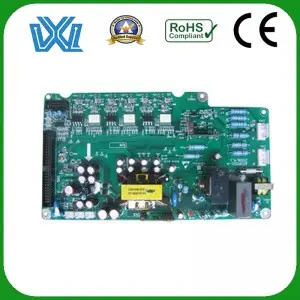Printed circuit boards (PCBs) are an integral part of every electronic device we use today. They provide the basis for electronic components, ensuring correct functionality and electrical connections. However, when designing a PCB, choosing the right materials can greatly impact the performance, durability, and cost-effectiveness of the final product. In this blog, we will look at the different factors to consider when choosing PCB materials.
Learn about PCB materials:
There are many types of PCB materials, each with different properties and benefits. Some common materials used in PCB manufacturing include FR-4, Polyimide, Rogers, and Aluminum. By understanding the properties of these materials, you can make informed decisions based on your design requirements.
Factors to consider:
1. Electrical Properties: The electrical properties of a PCB material play a vital role in determining its suitability for a specific application. Consider the material’s dielectric constant, loss factor, and loss tangent. These factors affect signal integrity, impedance control, and power handling capabilities.
2. Thermal conductivity and management: The ability of PCB materials to dissipate heat is critical, especially in high-power applications. Look for materials with high thermal conductivity to ensure optimal heat dissipation and reduce the risk of overheating and component failure.
3. Mechanical strength and durability: The mechanical strength of the PCB material determines its resistance to stress, vibration and bending. It should be able to withstand the environmental conditions in which the PCB is used. Consider factors such as tensile strength, flexural strength and impact resistance.
4. Cost and Availability: Cost and availability can vary widely within the PCB materials space. Consider the budget allocated to the project and weigh it against the desired attributes. Some materials may offer superior performance but at a higher price, while others may be more cost-effective but have limited availability.
5. Manufacturing process: Different PCB materials require different manufacturing processes. Some materials are better suited for traditional through-hole assembly, while others are better suited for surface mount technology (SMT). Understanding the manufacturing process and compatibility of selected materials is critical to avoiding manufacturing issues.
Case Study: Choosing the Right PCB Material for High Frequency Applications:
Let us consider a scenario: PCB is required for high-frequency circuits of wireless communication equipment. In this case, a material like Rogers PCB would be ideal. Rogers materials have low-loss dielectrics that ensure minimal signal loss at high frequencies. They also have excellent thermal conductivity, making them suitable for high-power designs that generate large amounts of heat.
The PCB material selection process is a critical step in electronic device design. By considering factors such as electrical performance, thermal conductivity, mechanical strength, cost, availability, and manufacturing compatibility, you can select a material that meets your project requirements. Remember to analyze the specific needs of your application to make an informed decision. Carefully selected PCB materials will improve the performance and reliability of your electronic designs.
Post time: Sep-25-2023

